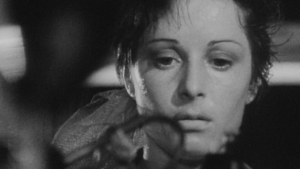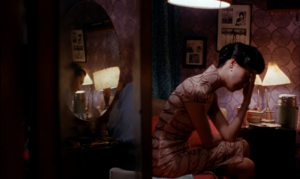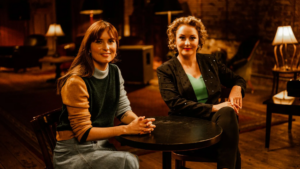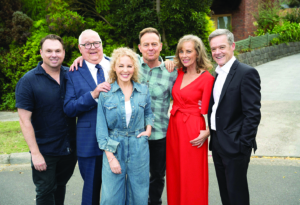There was a rush of communal emotion when the NBC/Netflix series The Good Place finished in late January. As a sitcom that was only four seasons old, it was hardly a longstanding constituent of the international televisionscape. However, the show’s ambition and cross-denominational reach made its passing loom large. Its creator, Michael Schur, had had his fingers in previous TV institutions like The Office (US), Parks and Recreation and Brooklyn Nine-Nine, and the acting suite included small-screen legends Ted Danson and Kristen Bell, as well as fabulous relative newbies Jameela Jamil, Manny Jacinto, D’Arcy Carden and William Jackson Harper.
In Australia, The Good Place arrived first on Netflix, with many viewers presumably finding the first two seasons as part of a summer binge session late in 2017 (it had been available from late September that year). After that, public broadcasting got hold of it, with delayed seasons acquired by ABC Comedy and played either at odd times of the evening or via iview. By the time Season 3 was ready, we were, too, but it was tied to the commercial streamer only and drip-fed to us one miserable episode a week in real time. This situation was made worse by the season being set in Australia – or, at least, an imaginary Oz where accents were almost authentic and plays on local clichés were magnificent, like the food truck ‘We Crumb from a Land Down Under’, the appearance of a long-lost Hemsworth brother and scratchies with names like ‘Who Wallaby a Millionaire?’ and ‘That’s Not a Jackpot, This Is a Jackpot!’
The difference between the bingeable first two seasons and the weekly instalments of the last two was agony. It was also an important reminder of how television, especially beautifully scripted and acted television, can be savoured rather than spent all at once. Although television is still considered by some to be film’s poor cousin (and comedy the poorer of the poor, compared to drama), this show presented so much to be relished rather than inhaled in a ‘just one more before bed’ marathon. For the real trainspotters, there was also the official weekly podcast to help continue keeping The Good Place(s) alive, featuring interviews and behind-the-scenes details and serving as an excuse to have the wonderful Marc Evan Jackson talk directly into your earlobes.
The cross-platform execution of The Good Place was a reminder of the power of the anticipation of a finale. As a show that ended when the creators decided rather than when network heads or ratings dictated, it was a rare beast. American series in particular are not great at finales, often dragging their feet towards one more season and one more set of ratings. Think: the ‘jail cell’ ending of Seinfeld, or the epic quest for and then eventual killing-off of the titular matriarch in How I Met Your Mother.
The added pressure on a series finale is that contemporary television makers seem to be working in an environment in which even the end isn’t quite, well, The End. Revivals of series once thought dead have now started to turn up after a decade or two, showing both that networks like a tried-and-tested product and that audiences love to revisit an old favourite, whether it be Twin Peaks, Veronica Mars, Arrested Development, Will & Grace or Roseanne (later The Conners). The challenge, then, becomes how to make a conclusion that seems like it has done the show’s current run justice – but perhaps also leaves room for a possible return.
The Good Place sidestepped this problem by writing a final ending into the finale. It was sad, but also beautiful, and – without giving away any spoilers – audiences will be satisfied with the option to actually leave. Other big American shows have found this kind of closure difficult, with five, six, seven or more seasons the expectation (and series like The Simpsons may outlive us all). This kind of uncertainty is not always terrible, however: when reinvention occurs, as it did with Doctor Who, there is a great luxury in being able to watch something that has been around since a viewer’s parents (or grandparents) were kids.
The other extreme is to end with a deliberate cliffhanger, as Phoebe Waller-Bridge did in her deliciously short-and-sharp, award-winning Fleabag. With only two seasons of six episodes each, the show in some ways almost seemed like it was over before it had begun. Easily bingeable in a weekend (or one big night if you’d cancelled your plans), Fleabag was a series that left you feeling like you’d only bought a small packet of your favourite dessert, yet eaten it all at once, anyway: not quite full, wanting more, but also a little worried that continuing to consume would spoil the experience. Time will tell if Waller-Bridge gives in to demands for more and undoes her perfect finale; but, in the meantime, endings like hers – and The Good Place’s eternal rest – are hard to beat.





